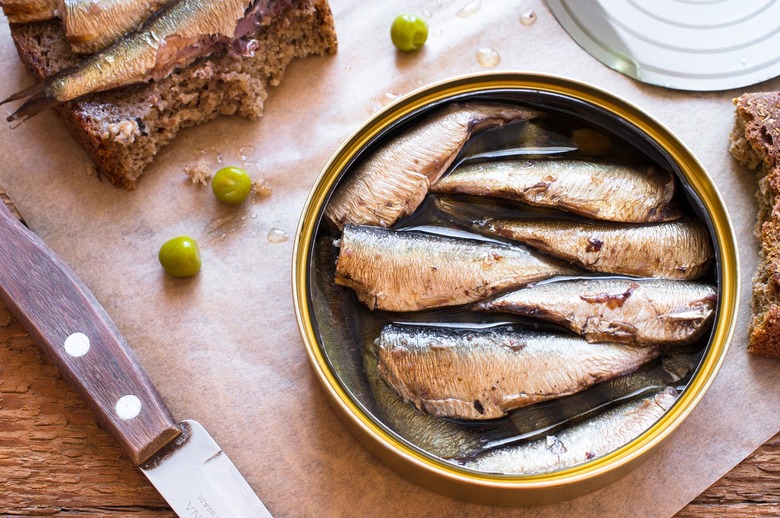People Are Eating Old Sardines On Purpose
That's right, old sardines — or rather, vintage sardines, kept in cellars and aged like fine wines or cheeses — are actually a thing that people seek out and thoroughly enjoy. The tins are regularly rotated, just as a giant wheel of Parmigiano-Reggiano might be, so that the sardines don't become stagnant, like those you might have in the back of your pantry.
Vintage sardines are prized for their mellower flavor, which after years of turning becomes more subtle and nuanced, with a soft, plump texture that probably comes from the tiny bones in the fish breaking down over time.
Zingerman's, the famous delicatessen in Ann Arbor, Michigan, explains some of the appeal on their "Sardine History" page:
"According to John Thorne, author of Simple Cooking, Oscar Wilde's son, Vyvyan Holland, started London's first sardine tasting club in 1935. Writing in the Spanish journal Gourmetour, Jose Carlos Capel said, 'In the larders of some European gourmets, tins of sardines in olive oil occupy a place of honor alongside pots of foie gras with truffles or jars of caviar. A cult has built up around these canned fish, which, with its preaching of the special qualities of the best brands, the correct year and maturity period within the tin, constitute a kind of gastronomical religion.'"
Tinned sardines, by nature, keep for years, so what exactly is happening with these vintage sardines? If they're packed in olive oil, their various flavors and aromatic compounds might be mixing and mellowing with one another, both becoming tastier and more unctuous as time goes by.
Fans of this fishy delicacy enjoy the aged sardines on toast or crackers — or even simply on the end of a fork.
To learn all about why you should be eating sardines, click here.
